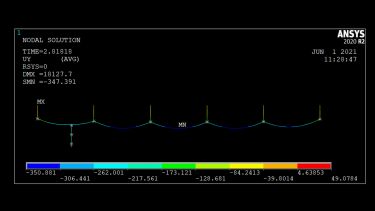Alternative overhead line equipment: system designs, materials, and fault predictions
Following recent achievements in developing an overhead line equipment (OLE) dynamic model and contact wire damage assessments, research is developing alternative overhead line equipment designs based on a classical trolley wire systems.

Overhead Line Equipment (OLE) used nowadays is primarily a catenary type which provides stable and efficient power transmission to railway vehicles. However, it comes with complex configurations making it unsuitable for low-usage and low-speed lines. A trolley system usually seen in city trams is being re-explored and improved by means of computer simulation and experimental approaches aiming to offer alternative designs with greater efficiency in the use of materials.
Research related to the trolley wire system has progressed little since the 1990s when some numerical calculations and scaled tests were conducted while the simple catenary has gained more interest from academia and industry. The trolley wire usually used in low-speed applications has been overlooked since then. Sheffield is conducting research to evaluate routes by which the trolley wire configuration can meet modern demands as an alternative OLE system. This has defined a series of research challenges being tackled in this project.
Staff
Supakorn Suttidarachai, PhD student
Professor David Fletcher School of Mechanical, Aerospace and Civil Engineering
Professor Roger Lewis School of Mechanical, Aerospace and Civil Engineering
